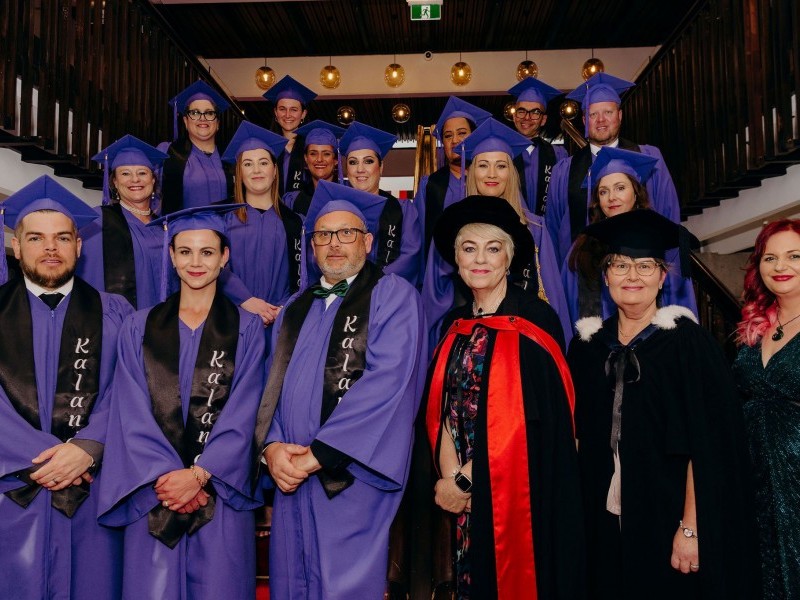The Science of Happiness: How can we pursue happiness at this time of the pandemic?
Alma Urbiztondo
Human beings are always in the pursuit of happiness. At this very difficult time of the pandemic, how can one become positive and happy?
The American Psychological Association (n.d.) defined happiness as a sense of satisfaction, joy, and wellbeing. Scientifically, happiness refers to hedonia which means the presence of positive emotions such as comfort, hope, inspiration, and pleasure and the absence of negative emotions (Nelson-Coffey, 2021).
Furthermore, Seligman (2002) a Positive Psychology pioneer developed a theory explaining happiness in people. He emphasised that those who are satisfied and optimistic are those who can combine their strengths, temperance, and persistence. He theorised that there are three dimensions of happiness which include the Pleasant Life, the Good Life and the Meaningful Life.
We achieve the Pleasant Life, when we begin to appreciate the basic things or pleasures in life (Seligman, n.d.). For example, appreciating the time we spend with family and friends, the beauty of our nature or environment and even as simple as appreciating the food we eat or the material things we have no matter what the brand or price of it.
The Good Life on the other hand is where we discover our unique abilities and strengths and use it to improve our lives. So, we might be engaged in activities to strengthen our knowledge such as trying to learn a new skill. Learning a new skill enhances our self-esteem and make us appreciate more ourselves thus contributing to feelings of happiness. Lastly, the Meaningful Life is about having a sense of accomplishment by utilising one’s strengths for something that would give purpose and meaning in life (Malcolm, 2016).
The PERMA model stands for: P – Positive emotion; E – Engagement; R – Positive Relationships; M – Meaning; and A – Accomplishments/achievements.
P – Positive Emotion is the construct that include feelings of joy, love, compassion, gratitude and hope.
Positive emotions include hope, interest, joy, love, compassion, pride, amusement, and gratitude. These emotions can be cultivated or learned to achieve a positive wellbeing. In this pandemic, it is important that individuals can integrate positive emotions into daily life such as by maintaining connections to people even if it’s done virtually or by doing activities that you enjoy such as reading books, gardening or even listening to music. Another way is by appreciating simple blessings in life such as being safe and well during this pandemic (Positive Psychology, n.d.).
E – Engagement
This component of PERMA Model emphasises that it is important that people live in the here and now and focus on what needs to be done. A good example of being engaged is by participating in activities that you are passionate about that allows you to forget about time when you do it or by recognising your strengths as an individual and doing things that you excel in (Positive Psychology, n.d.).
R – Positive Relationships
The PERMA model refers to any relationships such as or interactions with friends, family, colleagues, bosses, and our community. This pertains to the need for being loved, cared for, and being supported by people. It is vital that we have strong social connections to be able to feel happy and cope with life adversities. When feeling alone, it is good to keep in touch with people, create friendships or even join groups that you could meet people and learn at the same time (Positive Psychology, n.d.).
M – Meaning
Every individual has the need to search for life’s meaning and understand their worth as a person. If an individual has found his purpose in life, this will allow them to be able to focus on important things in life although they are facing a lot of challenges. Finding meaning in life can be through finding a career or anything that you are passionate about, involvement in activities, or even by being engage in a spiritual belief (Positive Psychology, n.d.).
A – Accomplishments/Achievements
People might say that accomplishing or achieving something may be difficult. However, PERMA model states that this component is about having the mastery or competency or even the motivation to continue what you are aiming to accomplish. Having the perseverance in fulfilling your goals shows that you are doing something to create some improvement for yourself.
To be able to work towards own achievement, a person must first set their goals, always look into past achievements and reflect on how they are able to obtain it and lastly, appreciate the things you have done in working towards your goal (Positive Psychology, n.d.) .
References
Malcolm, A. (2016). The 3 Types of Happiness. Retrieved from https://theskillcollective.com/blog/the-3-types-of-happiness
Nelson-Coffey, K. (2021, May 6). The Science of Happiness in Positive Psychology 101. Retrieved from https://positivepsychology.com/happiness/
Positive Psychology. (n.d.). PERMA Model. Retrieved from https://positivepsychology.com/perma-model/
Seligman, M. (n.d.). Pursuit of Happiness. Retrieved from https://www.pursuit-of-happiness.org/history-of-happiness/martin-seligman-psychology/
Back to Blog







